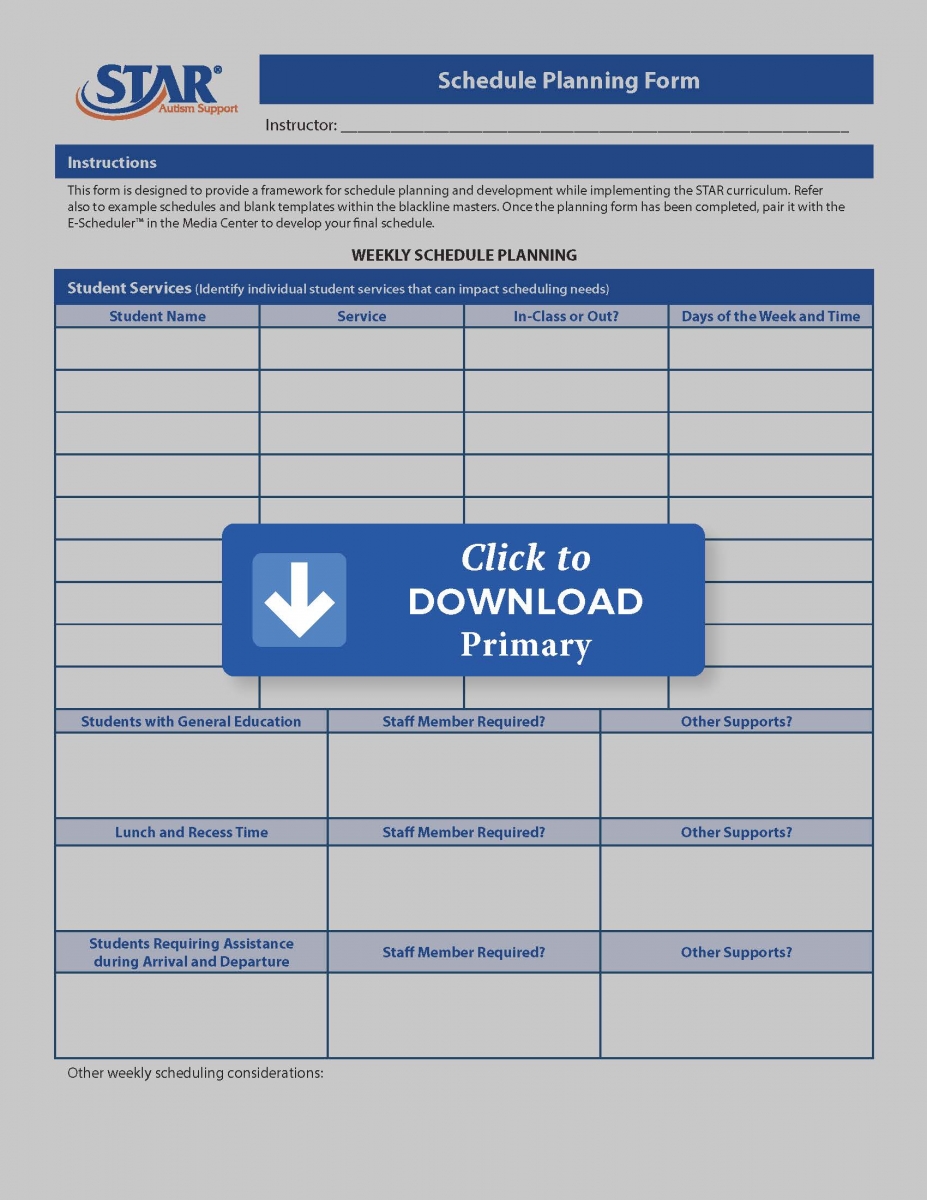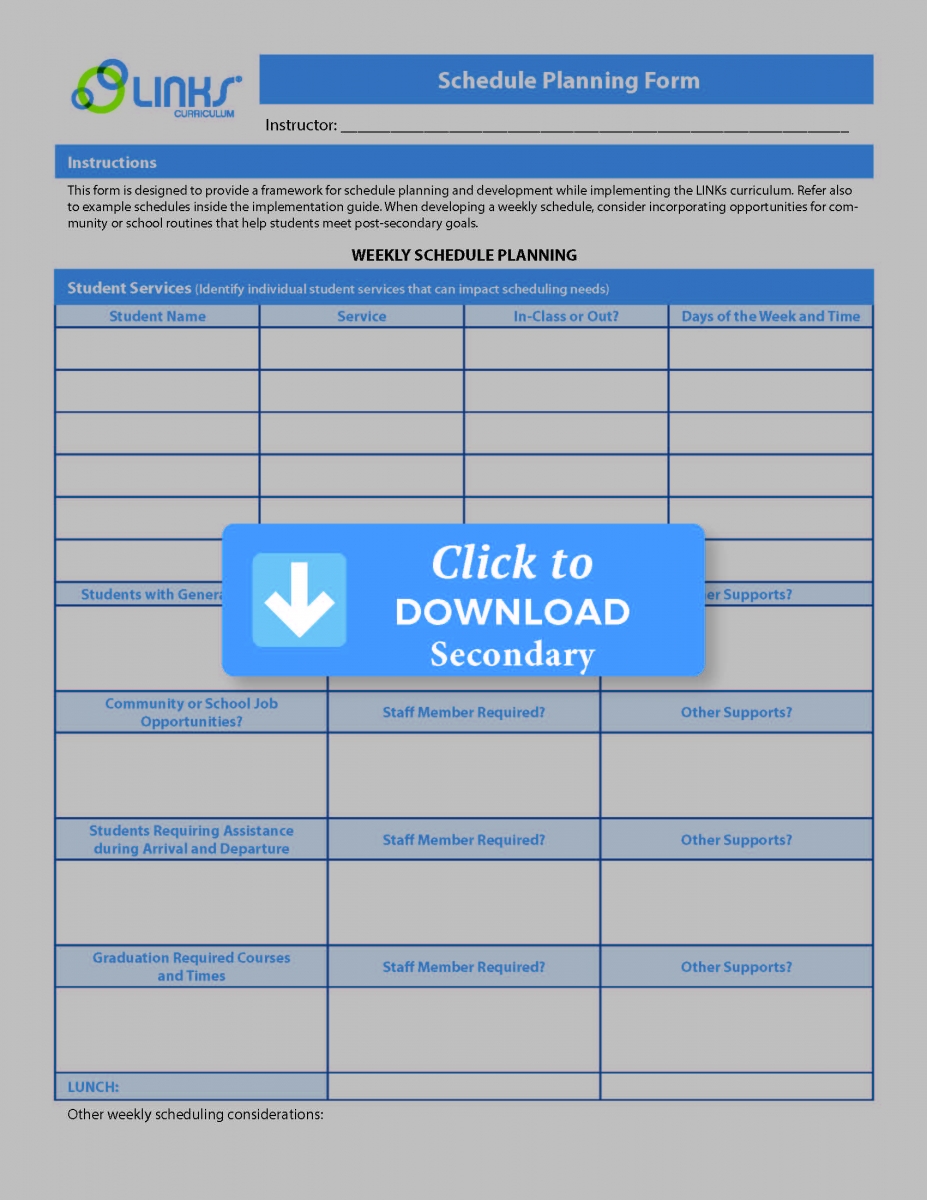Bring New Life to Classroom Scheduling
What’s one simple way to freshen up your classroom? Scheduling! We’ve put together six tips to make your scheduling process a smooth one. Check out the two free Scheduling Planning Forms below and read on to learn how to keep scheduling simple.
S - Start by looking at the non-negotiables
Ask yourself: what absolutely must happen in my classroom on a daily basis? For elementary and preschool instructors, are there daily assemblies or recesses that need to be built into the schedule? For secondary teachers, what are your students’ required courses? What services are essential for each student to make progress? What other activities or schedule restrictions are there at school?
I - Individualize instruction by using rotations
Determine the times you’ll have additional staff available, and build these supports into your planning protocol. When you’re not teaching to the whole class, use staff rotations to provide students with the individual support they need. Rotate students between stations to meet student instructional needs. For example, in the sample hour-long rotation schedule below, several students focus on independent work alone, giving the instructor and support staff opportunitiesto work on 1:1 lessons with other students.
Each student has their individual needs met, within a scheduling system that sets the classroom up for success.
M - Manage staff for seamless collaboration
Now that you’ve built your students’ scheduling non-negotiables into your plan, it’s time to consider your support staff’s needs. How can you balance staff lunches, breaks, and time supporting general education classrooms? We’re here to help. The STAR
E-Scheduler™ allows you to print off individualized schedules for specific staff members, so every person on your team has a clear plan for how the day will unfold.
This is an easy way to support staff communication and collaborative planning.
P - Plan your schedule using the Schedule Planning Form
Use these free schedule planning forms for primary or secondary classrooms to build a framework for your specific scheduling needs. By mapping out those non-negotiables on paper, you’re ensuring your students get the required assistance they need, and that you have space in your schedule for students to make individual progress toward increasing overall independence.
L - Let technology do the work for you
The E-Scheduler™ tool offers templates for creating preschool, elementary, and secondary classroom schedules, with expanded options to delineate multiple staff responsibilities at once. Create a schedule from scratch, or edit an existing template to customize it for your classroom.
E - Environmental supports make your life easier
Consider skill generalization by scheduling instruction in the school and in the community. When scheduling students throughout the day, consider the environmental supports needed for each setting.
This month’s theme unit—Fairy Tales and Fables —is loaded with activities, instructional materials, and visual supports for your classroom.
The upcoming Links Featured Routine—Attending a School-Wide Activity—offers daily and weekly instructional content, with additional environment supports and simulations.
Scheduling these kinds of opportunities for socialization and problem-solving will bring new life to your classroom and increase generalization of skills taught during 1:1 and small group instruction.
Crafting an instructional schedule for your classroom is simpler than you think, especially when you have STAR and LINKS resources backing you up.


